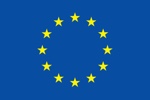Trace water detection in organic solvents using PTS
The task of this ESR will be to explore the potential of using photothermal spectroscopy also for liquid sensing. Major differences between gas and liquid sensing requires the development of dedicated solutions. These need to adapt to the fact that in liquid broad absorption bands prevail and that in solution the solvent itself, to a certain degree, also absorbs mid-IR radiation. Thus factors such as heat capacity and thermal diffusion length of analyte/solvent pairs need to be considered. A first realisation of liquid phase PTS will comprise a Mach-Zehnder interferometer which shall incorporate two identical flow cells in the interferometer arms each filled with the sample under investigation. A visible (HeNe) laser will be used and the interferometer operated in the quadrature point employing a balanced detection scheme. One flow cell will be excited by a pulsed mid-IR laser causing a temperature and thus refractive index change which will lead to a detectable phase shift in one arm of the interferometer. Aiming for a maximum photothermal contrast between solvent and analyte the application of measuring traces of water (very strong IR absorber) in organic solvents (week IR absorber) has been selected. The broader motivation of this study is to develop a reagent free alternative to the “Karl-Fischer titration” method, which is the standard technology for measuring trace water content in organic liquids but which can only be applied off-line, consuming sample and generating waste. Complementary analysis of proteins in aqueous solutions will be investigated as a most difficult application (both solvent and analyte show strong absorption) as well. Concerning the latter application, it will be investigated if based on PTS also the secondary structure of proteins can be detected.
The ESR will then build on the work of ESRs 1.3, 2.1, 2.3, 3.4 to realise liquid compatible integrated optics for liquid operation e.g. photonic crystals and hybrid lasers, for excitation and/or readout. The wavelength of operation will be chosen to minimise absorption by the liquid and the devices redesigned as appropriate. The liquid PTS system will be optimised to allow the use of such components.
Expected Results
- PTS of water in organic solvents using etalon system
- Balanced detection system
- Benchmarking with direct spectroscopy of proteins in water
Timeline
* N.B. Secondments and timings shown are indicative only, and may be subject to change.

 Giovanna Ricchiuti
Giovanna Ricchiuti Technische Universität Wien
Technische Universität Wien Munster Technological University
Munster Technological University





